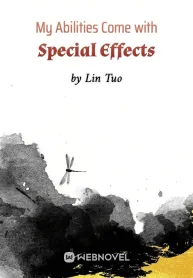Chapter 640 Commando
This is actually a very simple reason, because if the enemy knows how you will fight, or how you want you to fight, then they will be prepared, and they will even spend several years of training to format every step, so On the battlefield, you can always make the best response or choice with the fastest speed.
This is battlefield experience and army quality.
For example, the German army, because they summed up their previous combat experience and then passed on this combat experience to recruits through veterans or instructors, so that recruits have the same qualities as enemy veterans or even surpass enemy veterans as soon as they enter the battlefield.
Actually, German recruits usually don’t go directly to the front line to face the enemy... The German army has a system of new barracks, recruits recruited from the rear first enter the new barracks.
In the recruit battalion, there will be veteran officers telling them what the current battlefield is like, and then the recruits will be given necessary pre-battle training and perform some less dangerous tasks according to the situation.
On the one hand, this can allow soldiers to learn more about the battlefield situation, and on the other hand, it allows recruits to have a buffer and adaptation stage.
As a result, the casualty rate of recruits will naturally be greatly reduced, and finally the goal of rational use of every human resource will be achieved.
On the other hand, in the Soviet Army, too many soldiers were sent to the battlefield to directly face the enemy after only basic training, which made many soldiers with combat talents or command talents grow up before they had time to develop. Died by the enemy's gun.
This can be said to be a loss.
The advantage is that the short training period can mobilize a large number of troops in a short period of time, and these "large numbers of troops" are directly thrown on the battlefield. After suffering several battlefield casualties, the remaining soldiers will naturally grow into experienced veterans.
For the Soviet Union, although the proportion of veterans growing up is small, the number is still considerable.
In the middle and late stages of the German army, even because of insufficient troops, this "recruit battalion" system had already existed in name only, and recruits were also sent to the front line to fight as soon as they entered the army.
But before that, the German troops had a set of experience and a formatted system for regular combat on the battlefield. German soldiers didn't even need to think or ask for instructions. They could just follow the system when the Soviet army launched an attack.
In this case, the Soviet army with insufficient training and insufficient quality will of course suffer from a regular battle with the German army.
But if you fight with a different tactic, unconventional warfare, for example, on the night when a large-scale counterattack should have been launched against the German army, Shulka chose to let the Soviet army sneak attack.
"They don't need to occupy any territory!" Shulka said: "At the same time, there is no time limit, just ask them to throw a few grenades or fire a few rockets at the enemy's hideout, and then return after dawn!"
This time Dimitri did not object, and he quickly assigned the task.
Perhaps, Dimitri also wanted to see what would happen if Shulka fought like this. Anyway, it wouldn't lose much troops.
As a result, groups of soldiers lurked and infiltrated towards the German defense line in squads.
This is a bit like the caves that occurred on Laoshan during the Sino-Vietnamese War, except that the terrain is not a mountain but an urban ruin.
This infiltration of the Soviet army was not without purpose.
The trainee units have undergone relevant training. They guide NKVD soldiers on the front line to operate and conduct on-the-spot command and coordination.
Usually the sniper sets the target first.
This target is relatively important and also very stealthy or difficult to suppress with sniper rifles or mortars.
For example, the machine gun position in the middle of the building relies on windows and sandbags... Because it is in the center of the building, curved-fire guns such as mortars are basically incapable of it.
Another example is the bunker fortification.
Many of these fortifications were even built by the Soviet army and transformed by the German army. They could not be blown up with mortars. At the same time, because of the small number of perforations, it was difficult for snipers to pose a threat to the targets hiding in them.
Even in the previous sniper battles, the German army was equipped with periscopes in the bunker fortifications. Observers observed the Soviet positions through the periscopes and then reported the positions of the Soviet snipers to friendly forces.
For this kind of target, the Soviet sniper troops have nothing to do.
Because these bunker fortifications are low in size and strong in structure, shells are not easy to hit and even if they hit directly, they may not be able to blow them up.
Of course, only these targets require the Soviet army to infiltrate them with soldiers and blow them up.
As a result, the battle situation has changed.
This time is a bit slow, because this kind of penetration is quite a bit more patience... The Soviet sniper is responsible for suppressing the German army, and the mortar gun is responsible for attracting the attention of the German army to provide cover for the commando.
In this case, the commando crawled forward in the dark like snails in the corners of the ruins and in various dark places. Sometimes they only took a few minutes to crawl forward, and sometimes they took a risky leap forward. He disguised himself as a corpse, and then advanced all the way under the cover of the corpse.
It should be said that most Soviet soldiers are not good at doing this, because they are not patient people, and they prefer to rush forward under the cover of artillery fire compared to this kind of battle.
Another reason is that this kind of battle requires good psychological quality.
If you are charging with a gun, there will be a group effect, that is, everyone is charging, and individuals will involuntarily follow the crowd to charge forward no matter how scared they are, and the charge of the group can also embolden the individual.
This kind of lurking warfare is not the case. You lie on the ground and move forward slowly. You are alone in the darkness, with corpses, blood, darkness, and the muzzle of the enemy not far ahead...Once you are discovered, you will die, especially if you are crawling. Halfway through, there will be a feeling of collapse, just like a mountaineer who wants to give up but can't give up after climbing halfway. Outsiders can't understand the helpless feeling of wanting to cry without tears.
These are all psychological tortures and tests, and they are long-term and continuous.
The result of not being able to stand this kind of test is to go to extremes.
There are two extreme manifestations: one is to simply get up from the ground with grenades and explosives and rush forward.
The other is to drop the equipment and escape...
There were both situations in the first raid, which made the Germans a little baffled. They didn't understand why someone suddenly ran away in the middle of the defense line. In the dark, they even thought that their own people were charging and didn't shoot.
But soon they figured it out.
Because suddenly a smoking grenade flew into their bunker, or a rocket roared straight to the perforation.
"Enemy attack!" The German officer shouted: "They are right in front of us, find them, and send them to hell!"
(end of this chapter)







